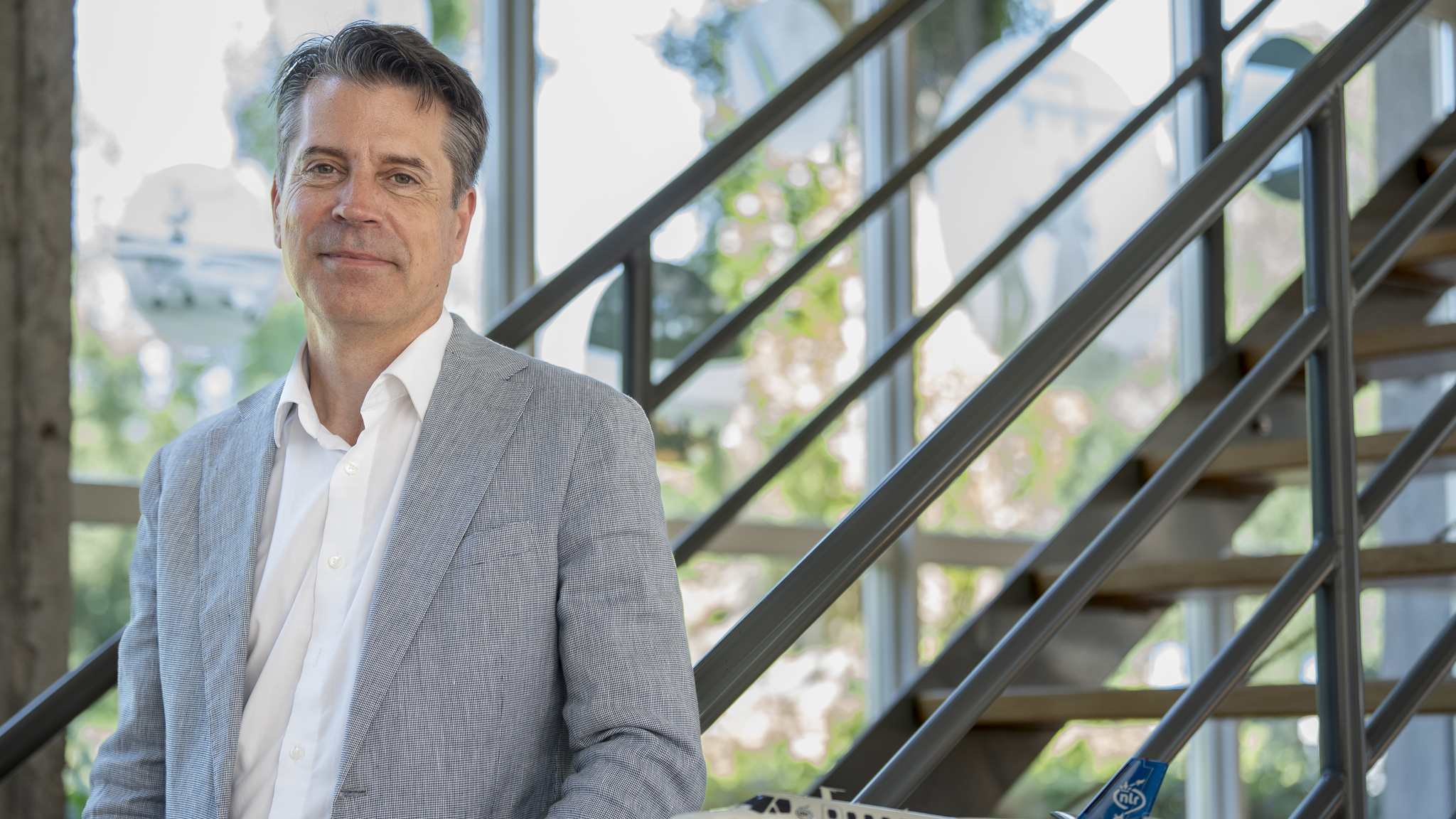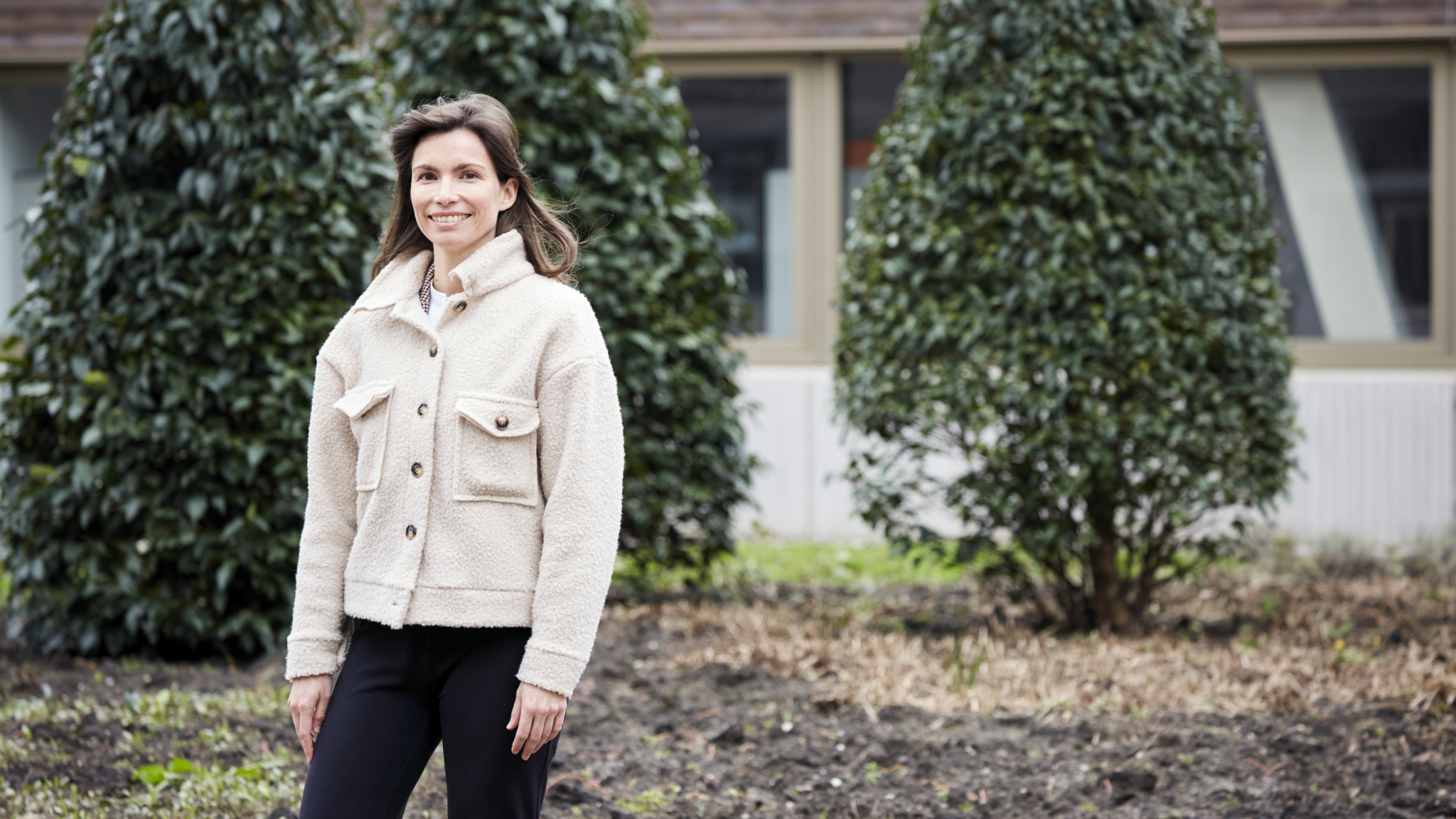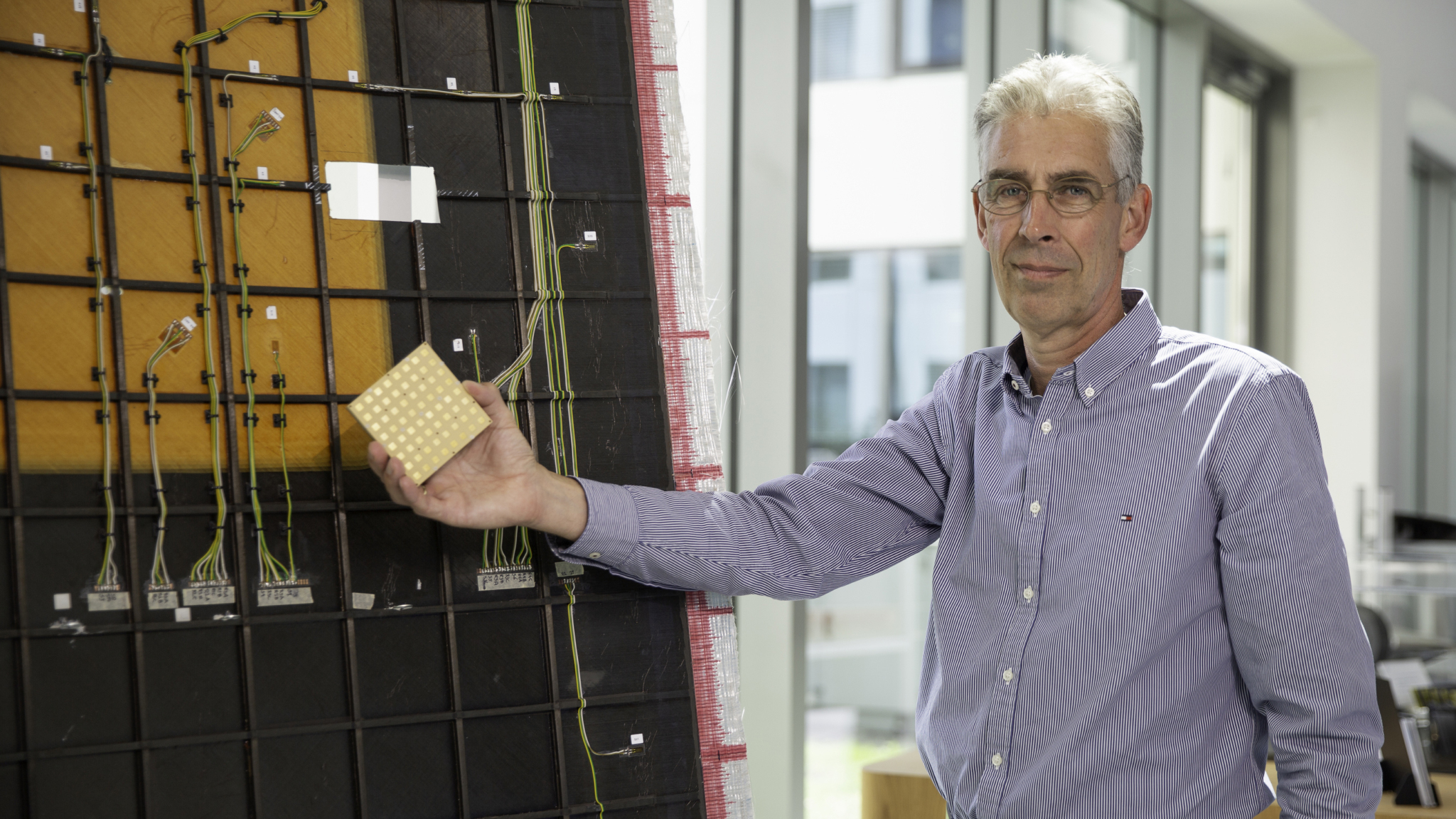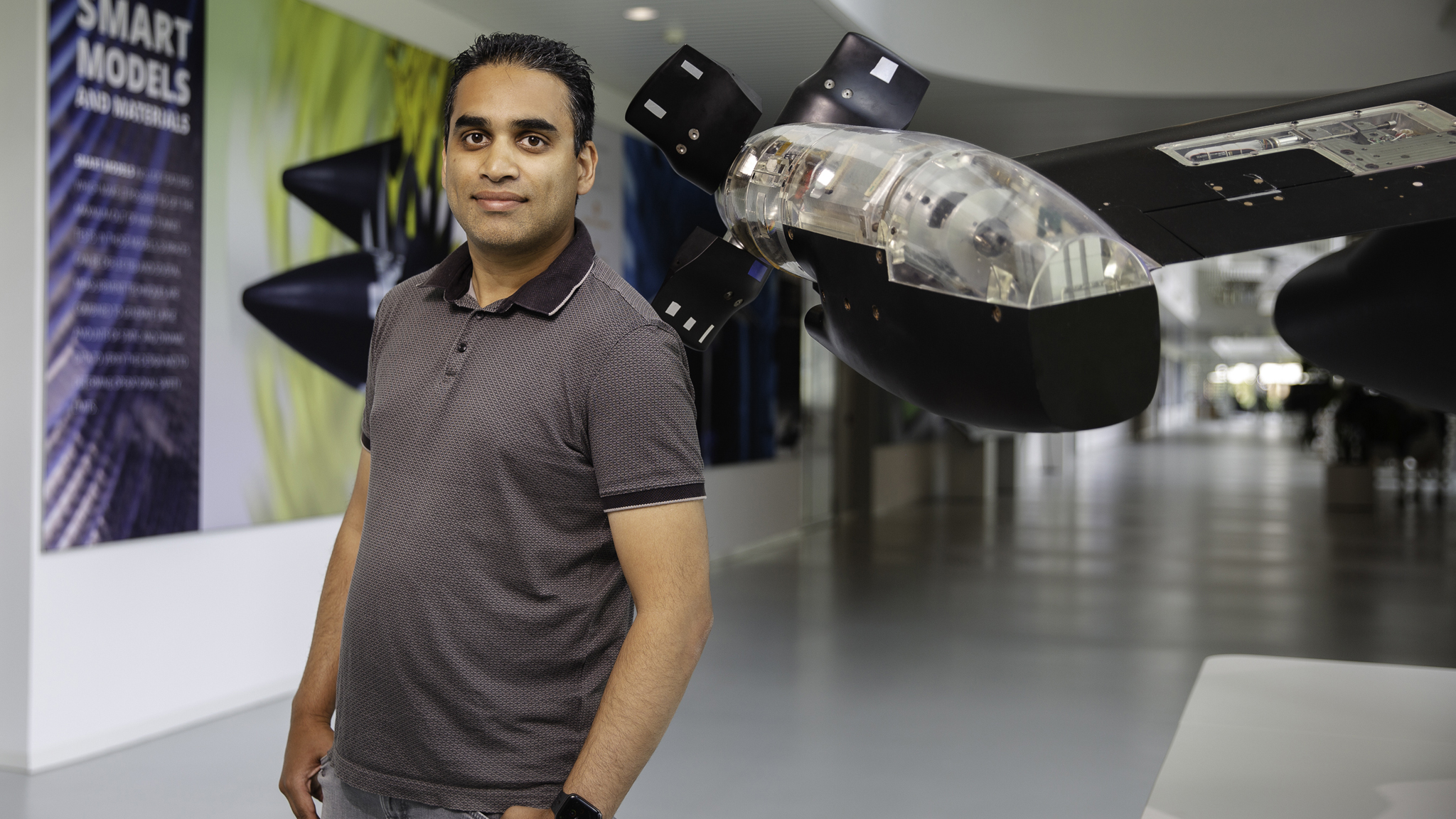Veilige luchtvaart
Het Koninklijk Nederlands Lucht- en Ruimtevaartcentrum (NLR) draagt bij aan de verbetering van de vliegveiligheid. Het voert onderzoek uit en helpt de luchtvaartsector grip te houden op en inzicht te krijgen in processen die de vliegveiligheid kunnen beïnvloeden. Dat houdt onder andere in dat NLR wordt ingeschakeld om onderzoek te doen naar de oorzaak van ongevallen.
Gerard van Es is principal consultant flight operations en flight safety bij NLR. “Grote ongevallen met vliegtuigen zijn uitzonderingen, maar ze maken een grote impact en blijven je hele leven bij.” Zijn carrière staat hoofdzakelijk in het teken van het voorkomen van dit soort ongevallen. “Wij werken hier elke dag aan het verbeteren van de vliegveiligheid. Dat doen we door de kennis van de omstandigheden waarin gevlogen wordt, te vergroten met onderzoek en innovaties. Veiligheid staat voorop bij de luchtvaart, sterker nog, het is een van de veiligste vormen van vervoer.”
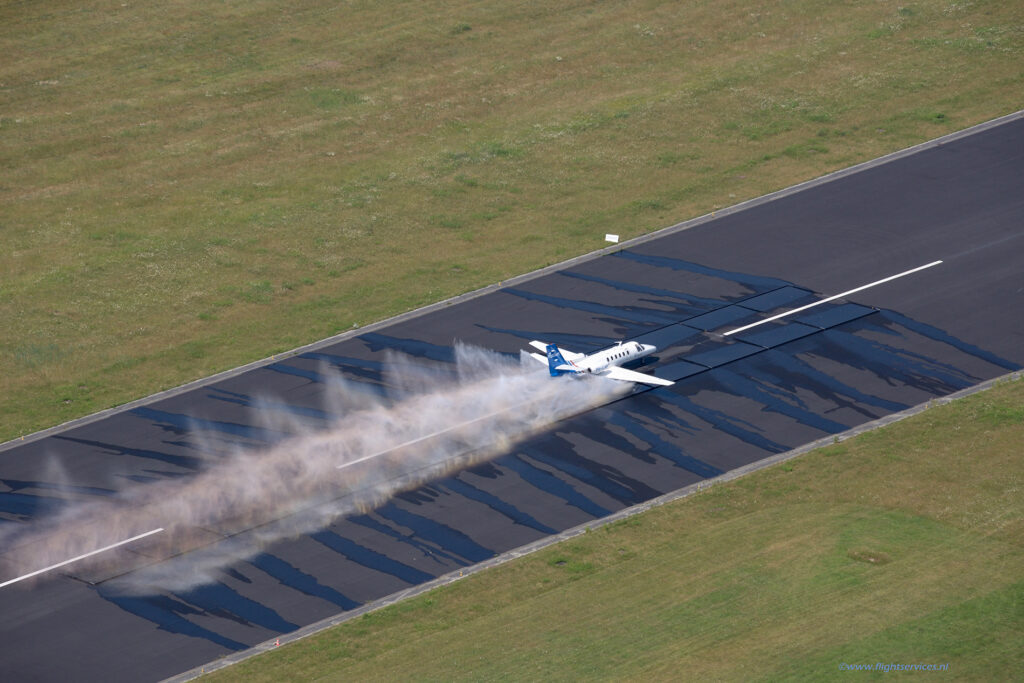
Veiliger landen door kennis over het baanoppervlak
De luchtvaart groeit nog steeds, en daarbij ziet de sector het aantal ongevallen het liefst niet stijgen. Als het gaat om landingen op natte landingsbanen, staat die teller nog (lang) niet op nul. Gerard: “Er zijn wereldwijd minstens twee landingen per week waarbij vliegtuigen niet tijdig op de baan kon stoppen. In sommige gevallen kunnen piloten het vliegtuig niet voldoende afremmen, maar er kan ook iets mis zijn met de baan. Het was voorheen vaak onduidelijk waardoor een vliegtuig ‘uitglijdt’ tijdens de landing.” Voor het Runway Microtexture Project bracht NLR, samen met het Duitse onderzoekscentrum DLR (Deutsches Zentrum für Luft- und Raumfahrt), in opdracht van EASA een plan uit voor de preventie van landingsincursies.
Wat bleek? De remprestaties van vliegtuigen op natte landingsbanen waren vaak veel minder goed dan werd aangenomen. De banen waren veel gladder zonder dat de luchthaven hiervan op de hoogte was. Gerard: “Landingsbanen zijn vaak van asfalt of een vergelijkbaar product gemaakt. Asfalt bestaat uit steenslag en bitumen, een plakkerige vloeistof afgeleid van ruwe aardolie. De steenslag zorgt voor een goede afwatering maar bevat ook kleine, scherpe stukjes vergelijkbaar met schuurpapier (microtextuur). Dit is van groot belang om goede remprestaties te verkrijgen wanneer het regent en de baan nat is. Deze microtextuur kan slijten waardoor een baan letterlijk gladder wordt. Luchthavens hebben moeite met het vaststellen van deze slijtage.”
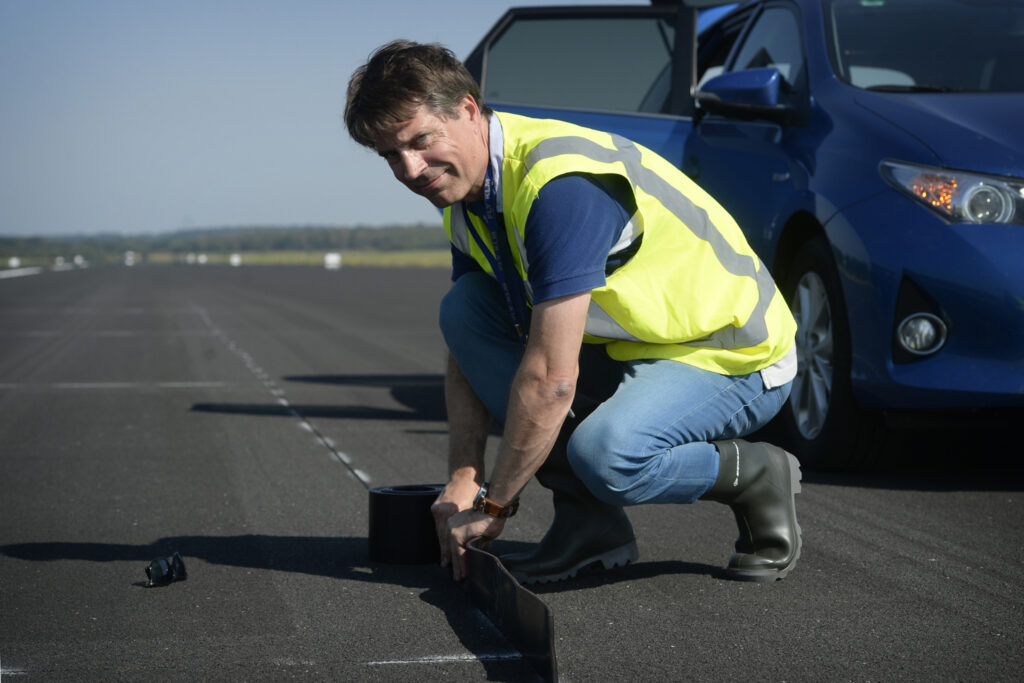
Dus plande Gerard tientallen testvluchten met het testvliegtuig van NLR (en TU Delft) – de Cessna Citation II – en het testvliegtuig van DLR op nat gemaakte landingsbanen van onder andere de luchthaven van Twente. Uit deze proeven werd de effectieve remwrijving voor verschillende snelheden afgeleid. “Als een luchthaven weet over welke textuur hun landingsbanen beschikken, kunnen ze de juiste remeigenschappen van de baan melden aan de piloten. Zo vergroten we de kans op een succesvolle landing”, legt Gerard uit.
Binnen het Runway Micro Texture programma ontwikkelt NLR nu een methode waarmee luchthavens in Europa, met behulp van geavanceerde lasers, hun eigen landingsbanen heel precies in kaart kunnen brengen. De veiligheidsexpert is net terug uit de Verenigde Staten; ook daar voert NLR deze testen uit op de testluchthaven van NASA. Ook de Amerikaanse luchtvaartautoriteiten (FAA) zijn geïnteresseerd en hebben NLR opdracht gegeven voor extra vliegproeven.
“Vliegen is een van de veiligste transportopties, maar om dit zo te houden, blijft onderzoek nodig”
Uiteenlopende ambities
Dat Gerard in de luchtvaart werkt, is geen langgekoesterde jongensdroom. Als kind wil hij stratenmaker worden, maar dat vindt zijn vader geen goed idee. Hij gaat van de mavo naar de havo, en als een vriend zich inschrijft voor de open dag van de vliegtuigbouwopleiding in Haarlem – en vooral: daar een vrije dag voor krijgt – hoeft hij niet lang na te denken. “Ik kon nog geen Boeing van een Airbus onderscheiden, maar er werd gezegd dat het een moeilijke opleiding was, dus dat leek me wel wat.”
Hij krijgt de smaak te pakken en verhuist naar Delft, waar hij Lucht- en Ruimtevaarttechniek studeert. Via een advertentie in de krant komt hij bij het Nederlands Lucht- en Ruimtevaartcentrum terecht – dertig jaar later werkt hij er nog steeds. Inmiddels woont Gerard in een klein dorp in Noord-Holland, is hij getrouwd en vader van twee kinderen.
AI gaat helpen om fouten te voorkomen
Sinds Gerard bij NLR begon, is zijn vakgebied sterk veranderd. Waar veiligheid vroeger een apart onderdeel was binnen luchtvaartorganisaties, is het nu een integraal onderdeel van het management. “Kijk alleen al naar onze afdeling. Toen we begonnen, waren we met z’n vijven, nu is dat aantal meer dan verdubbeld. Daarnaast hebben de opkomst van AI en machine learning onze sector in een stroomversnelling gebracht. We hebben nu veel meer mogelijkheden om grote hoeveelheden data te analyseren en veiligheidsproblemen te identificeren.”
Zo werkt NLR aan een nieuw spraakherkenningssysteem op basis van AI dat bijdraagt aan een efficiëntere en veiligere afhandeling van het luchtverkeer. Soms verloopt de communicatie tussen luchtverkeersleiding en vliegers moeizaam, legt Gerard uit. Daarvan zouden we graag een beter beeld hebben. “Er zijn duizenden uren aan audio van gesprekken, maar daar wordt niet veel mee gedaan. Om zulke data automatisch te analyseren op fouten moet je de audio omzetten naar tekst. Dat is echter niet zo eenvoudig als het lijkt. Neem ‘cleared to’. Dat kan ‘geklaard naar’ betekenen, maar ‘to’ kun je ook vertalen als ‘twee’. De betekenis is dus sterk afhankelijk van de context. Wij trainen een algoritme dat de audio op de juiste manier vertaalt in tekst.”
Het systeem gaat inzicht verschaffen in de frequentie van communicatiefouten, maar ook in wat voor situaties de fouten zich voordoen en wie ze maakt (de piloot of de luchtverkeersleiding). Deze informatie moet ervoor zorgen dat fouten in de toekomst minder vaak voorkomen. Bovendien; als de luchtverkeersleiding nu een gesprek met een piloot wil terughalen, moeten ze handmatig audiobestanden terugluisteren. Het is veel makkelijker en sneller als die informatie wordt opgeslagen als tekst. Dit project bevindt zich in een voorstadium, maar het illustreert goed hoe we met de combinatie van nieuwe technologie en onze expertise de luchtvaartsector nog veiliger en betrouwbaarder kunnen maken voor iedereen. “Ik denk dat dit toch beter bij me past dan stratenmaker,” glimlacht Gerard.
